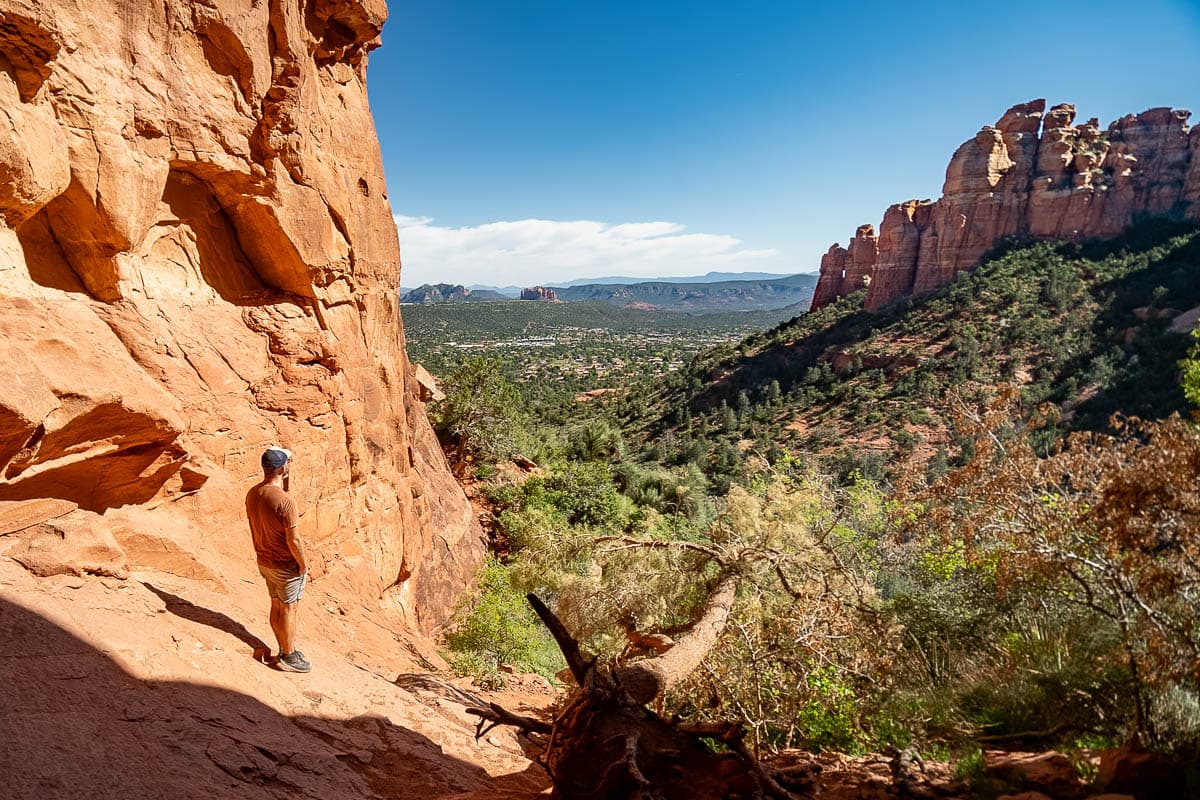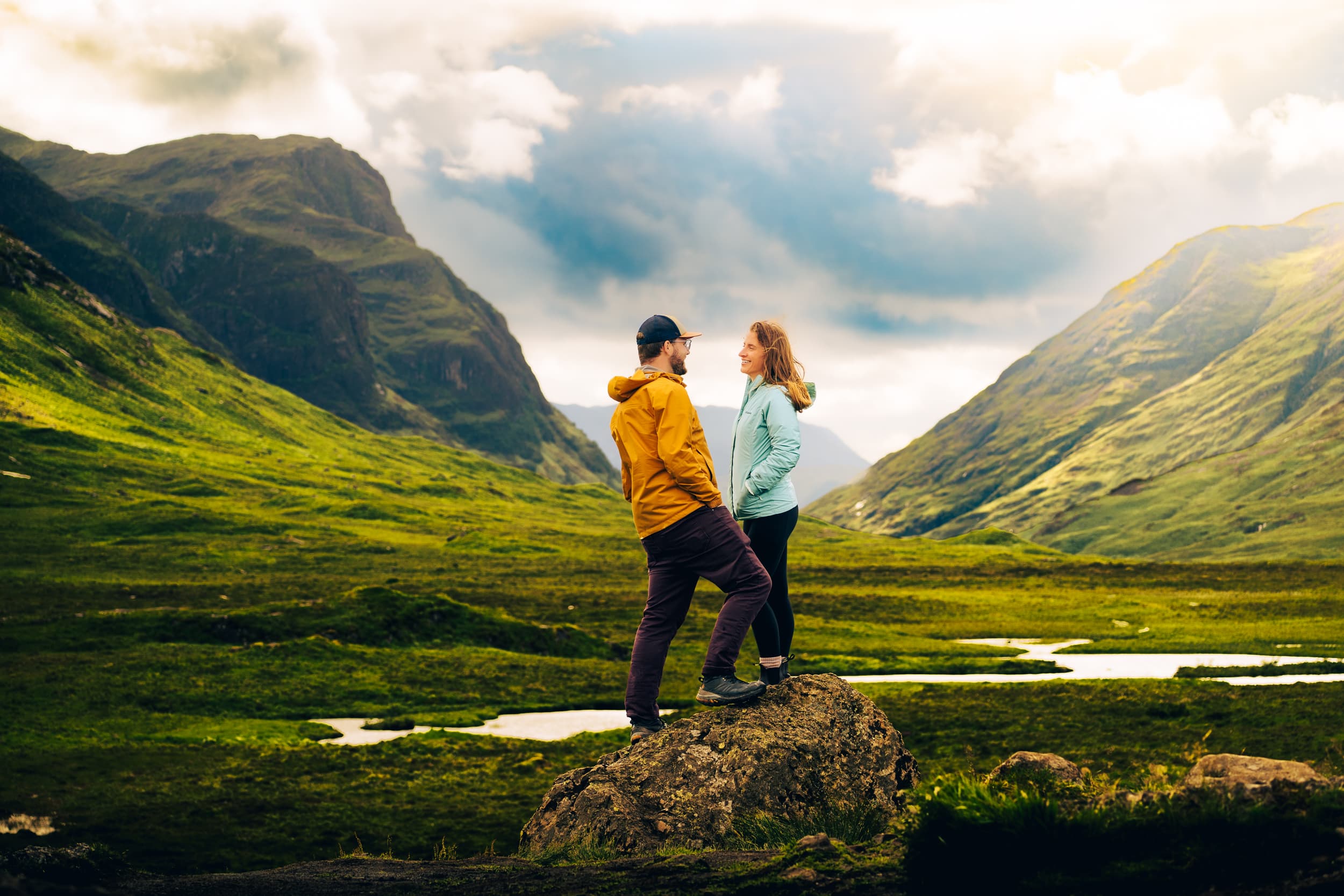Sedona, Arizona’s iconic red mesas, cliffs, and caves attract more than three million visitors a year. While many of the trails in this quirky town are filled to the brim with visitors, there’s still a few under-the-radar spots to explore without the crowds, like the Keyhole Cave, a massive cavern that’s caverned into the side of a cliff overlooking the surrounding rock formations and the desert landscape below. Here’s everything you need to know to hike to the Keyhole Cave, one of the best hidden gems in Sedona.
This post may contain affiliate links. If you make a purchase through them, we may receive a small commission, for which we are extremely grateful, at no extra cost to you.
About the Keyhole Cave
- Length: 2.0 miles
- Elevation gain: 531 feet
- Difficulty: Challenging
- Trail map
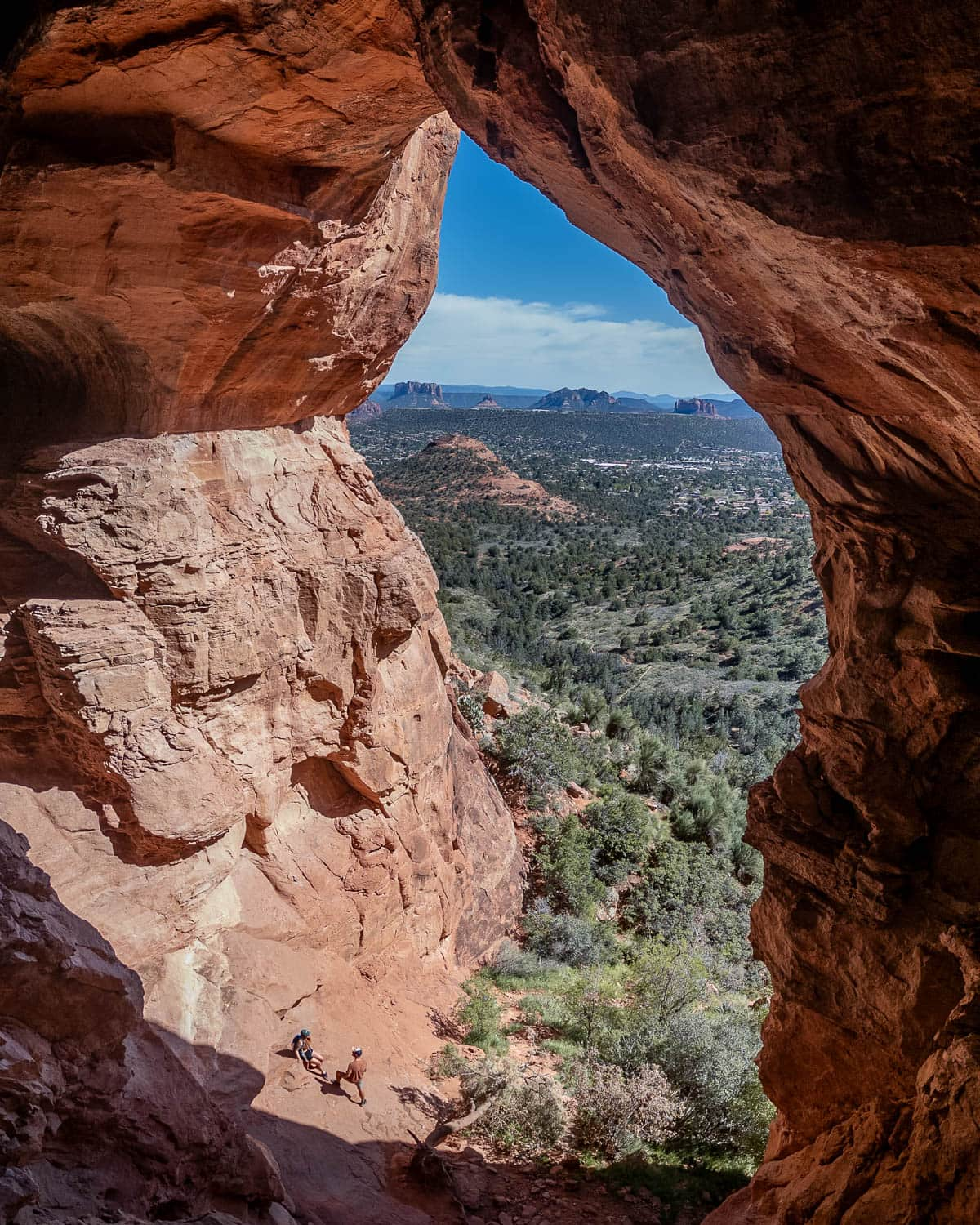
How to Get to the Keyhole Cave Trailhead
The Keyhole Cave trailhead is located here, just north of downtown Sedona.
Several other popular hikes in Sedona, like the Sugarloaf and Teacup Trail, depart from this trailhead. Given that its parking lot only holds 16 cars, it can frequently fill up, especially during busy periods, like weekends in the spring or fall. Accordingly, I’d suggest trying to hike the trail on a weekday or arriving on the earlier side to have a better chance to snag a spot.
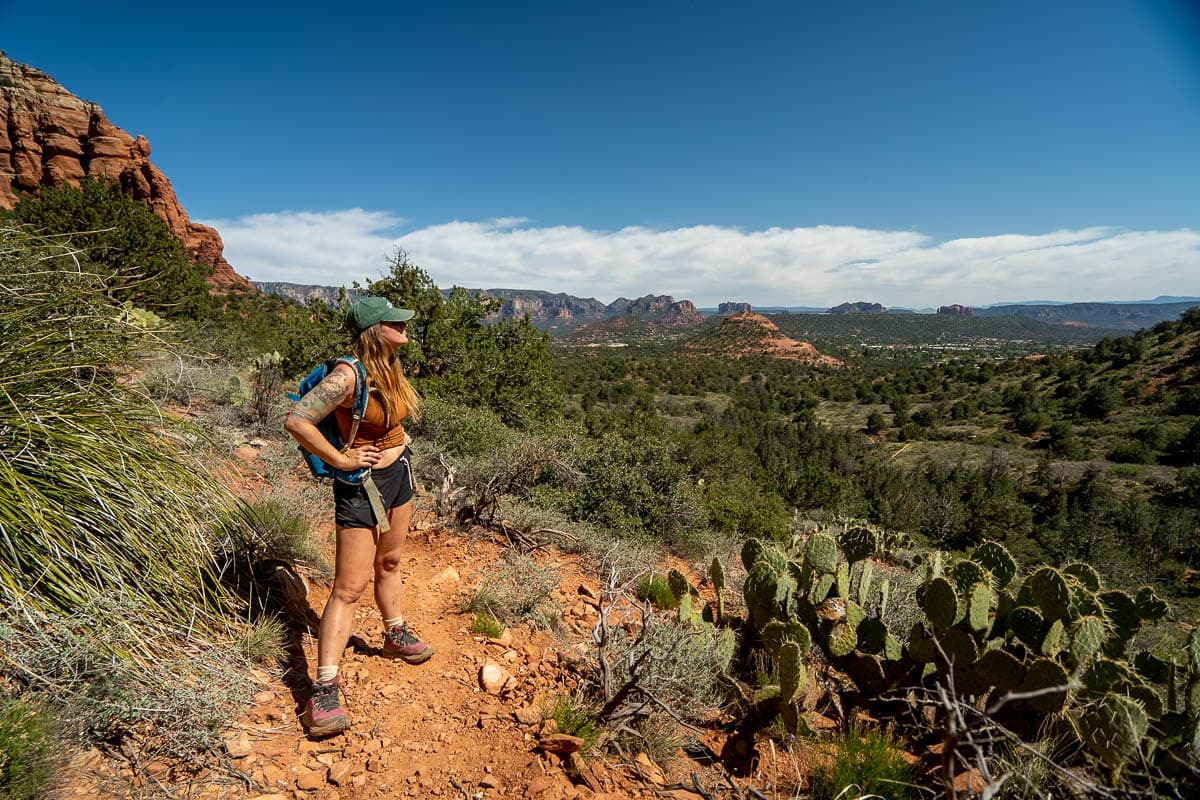
The Keyhole Cave Trail is located in Sedona’s Coconino National Forest, so you’ll need a Red Rock Pass to park here, which you can either buy online or at various retailers around Sedona. Alternatively, if you happen to have an America the Beautiful Pass, it will cover you at the Keyhole Cave trailhead, along with 20 other fee sites in Sedona and over 2,000 federally managed sites across the United States for a year.
As a backup, the trailhead is located in a residential area, so if you strike out in the parking lot, you can try to find parking in the surrounding neighborhood. Just keep an eye out for “No Parking” signs—in part, to be respectful of the locals, but also because the police here can be pretty savage about ticketing and even towing people!
What to Expect along the Keyhole Cave Trail
From the trailhead to the mouth of Keyhole Cave
From the trailhead, you’ll hike along the Teacup Trail, hiking along a dirt path that slopes gently uphill.
At 0.3 miles into the hike, you’ll reach a junction, with the Teacup Trail branching off to the right and Thunder Mountain branching off to the left. Instead of either of these options, you’re going to continue straight ahead of you on the social trail that cuts along the desert floor.
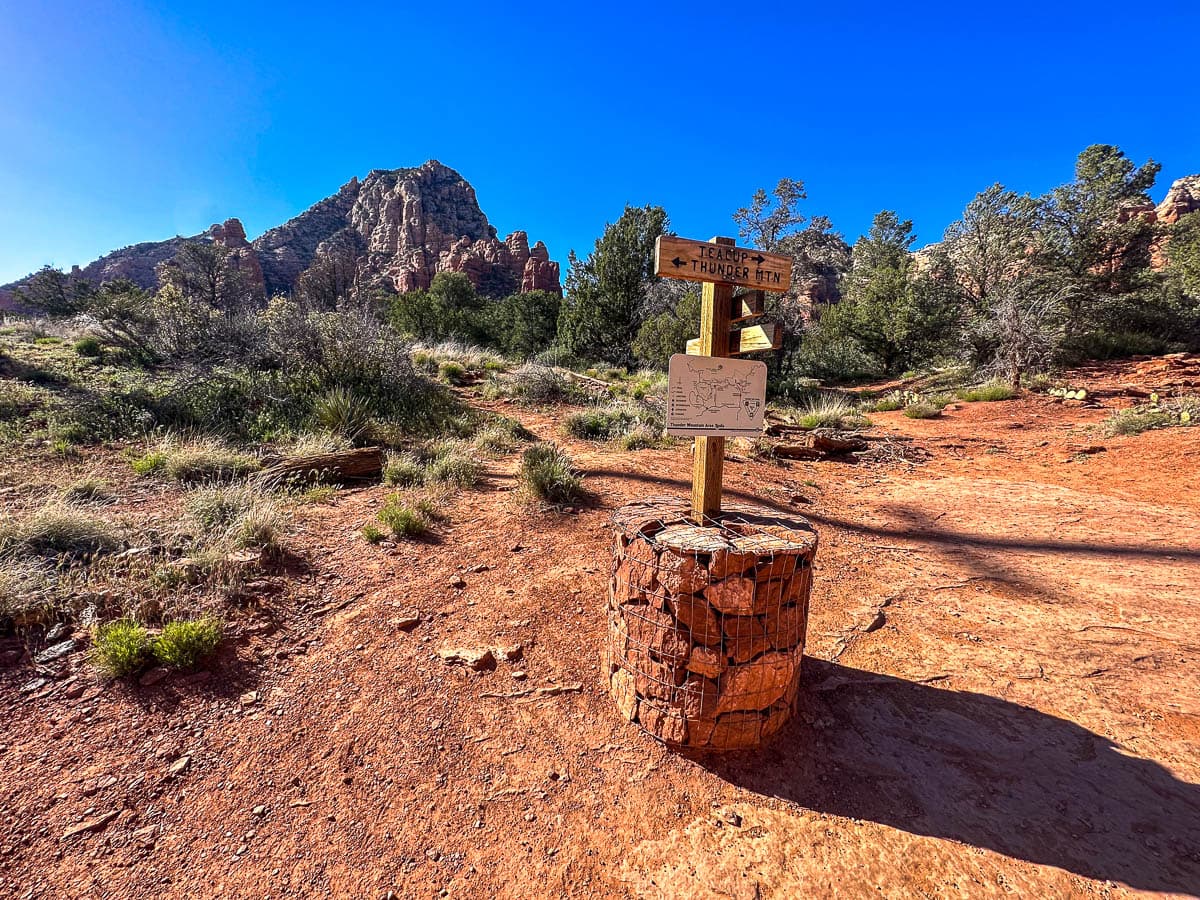
To be honest, there’s TONS of boot trails and little pathways in this area—I’d strongly suggest downloading an offline version of the trail map on AllTrails so you can follow along with your GPS. My husband, Justin, and I were tracking our hike on AllTrails and still managed to get turned around a few times!
The rest of the trail is along a narrow social trail, sloping gently uphill and lined with tons of cacti and other succulents. In the distance, you’ll see the Keyhole Cave in front of you, etched into the side of an enormous cliffside.
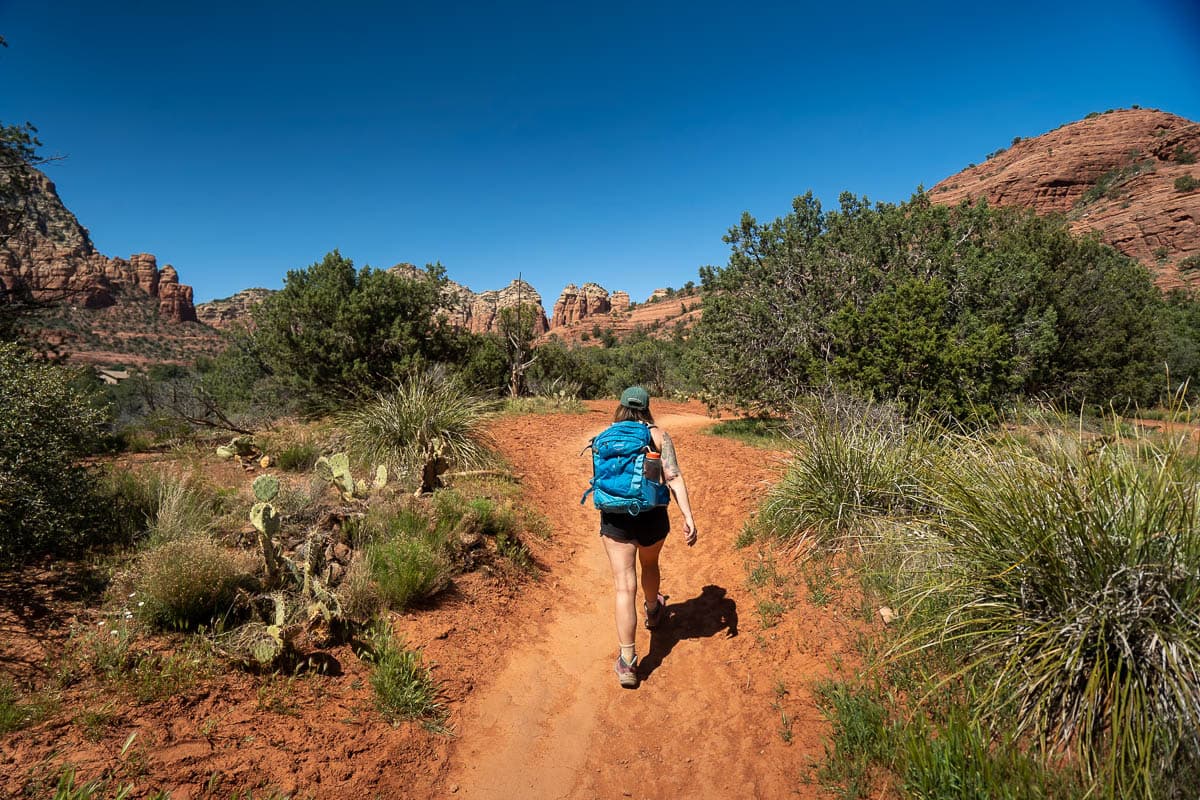
Around 0.8 miles into the trail, the incline becomes noticeably steeper and the dirt pathway is replaced by crumbly rocks. While most of the trail is pretty easy, the last 0.1 miles up to the cave is extremely challenging, climbing 300 feet up loose and slippery rocks to the opening of the cave.
Because of how challenging this section is, I’d suggest packing along some trekking poles to provide a bit more stability and support while you’re climbing and giving others around you plenty of space. I may or may not have accidentally started a tiny rock fall while scrambling uphill that would have wiped Justin out, had he been following me any closer.
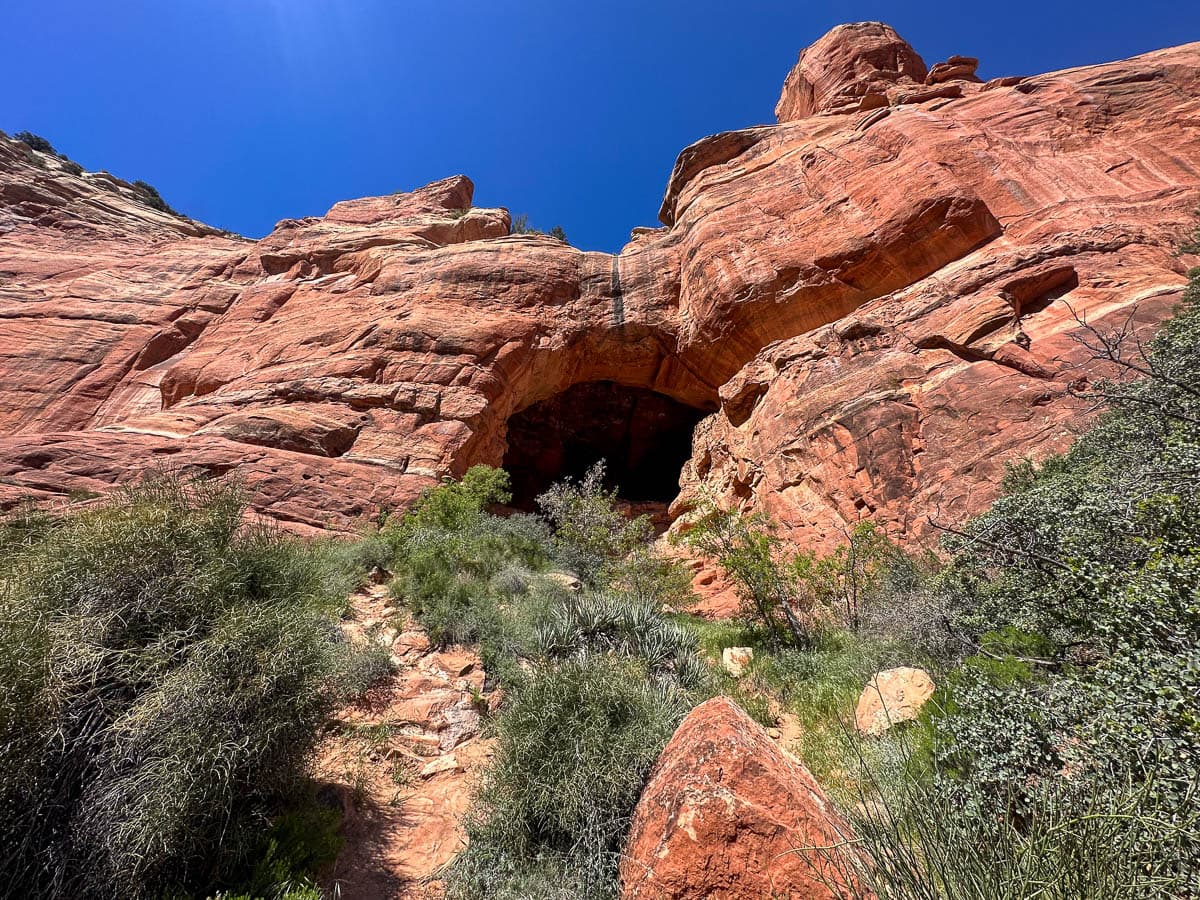
Once you climb your way to the top, you’ll be at the enormous mouth of the Keyhole Cave, which stretches at least 100 feet high. There’s all kinds of cool caves in Sedona, like the Subway Cave, but, in my opinion, this one offers the very best vistas of Sedona, like the surrounding Bell Rock and Ponderosa pine tree forests.
Climbing to the top of Keyhole Cave
The fun doesn’t stop once you reach the opening of the cave—you can still climb up a 40-foot wall to a ledge near the top of the cavern.
This section is STEEP—in fact, it’s more akin to rock climbing, than hiking or scrambling. There’s three routes that you can theoretically choose from—either the left, center, or right side of the cave. Justin and I scoped out the three routes and decided that the left side looked the least steep and had the most footholds. However, we couldn’t figure out a pathway that felt safe so we ultimately didn’t get to the top ledge.
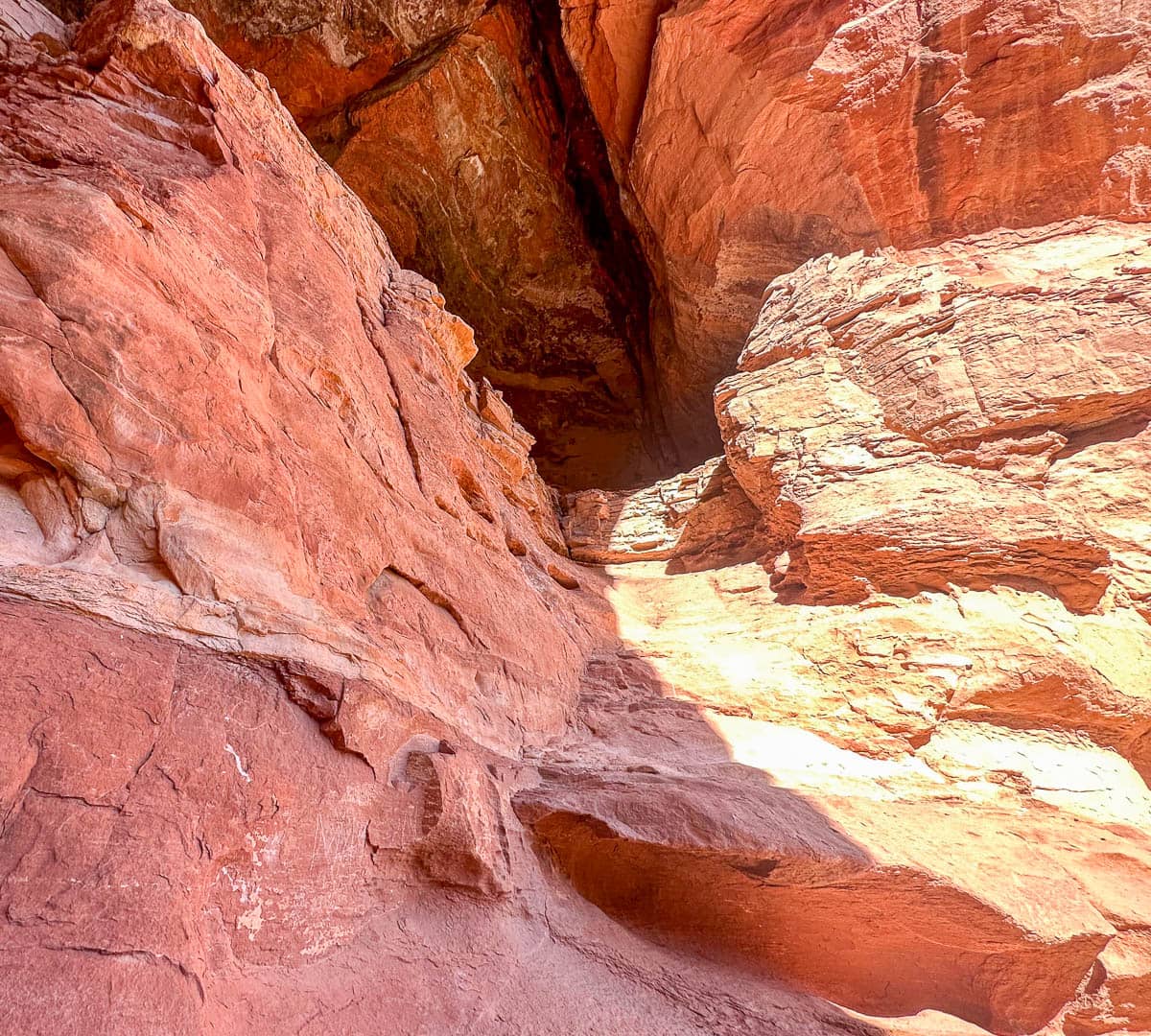
After we returned from our hike, I wound up poking around online and found out that the general consensus is that the right pathway is widely considered to be the safest route. I’ve also heard there is sometimes a rope or chain dangling over the ledge to help you reach the top, but it definitely wasn’t there when we visited, so don’t count on it!
I wouldn’t recommend attempting this last portion of the hike if you’re a solo hiker, if you’re scared of heights or if you don’t have experience with Class 3 rock climbing. It would be super easy to fall and hurt yourself here—and given how under-the-radar this trail is, it’s possible you could be here for quite a while before anyone might come around to help you!
If you do make it all the way to the top, be super careful around the ledge—it’s surprisingly slippery and very easy to fall off.
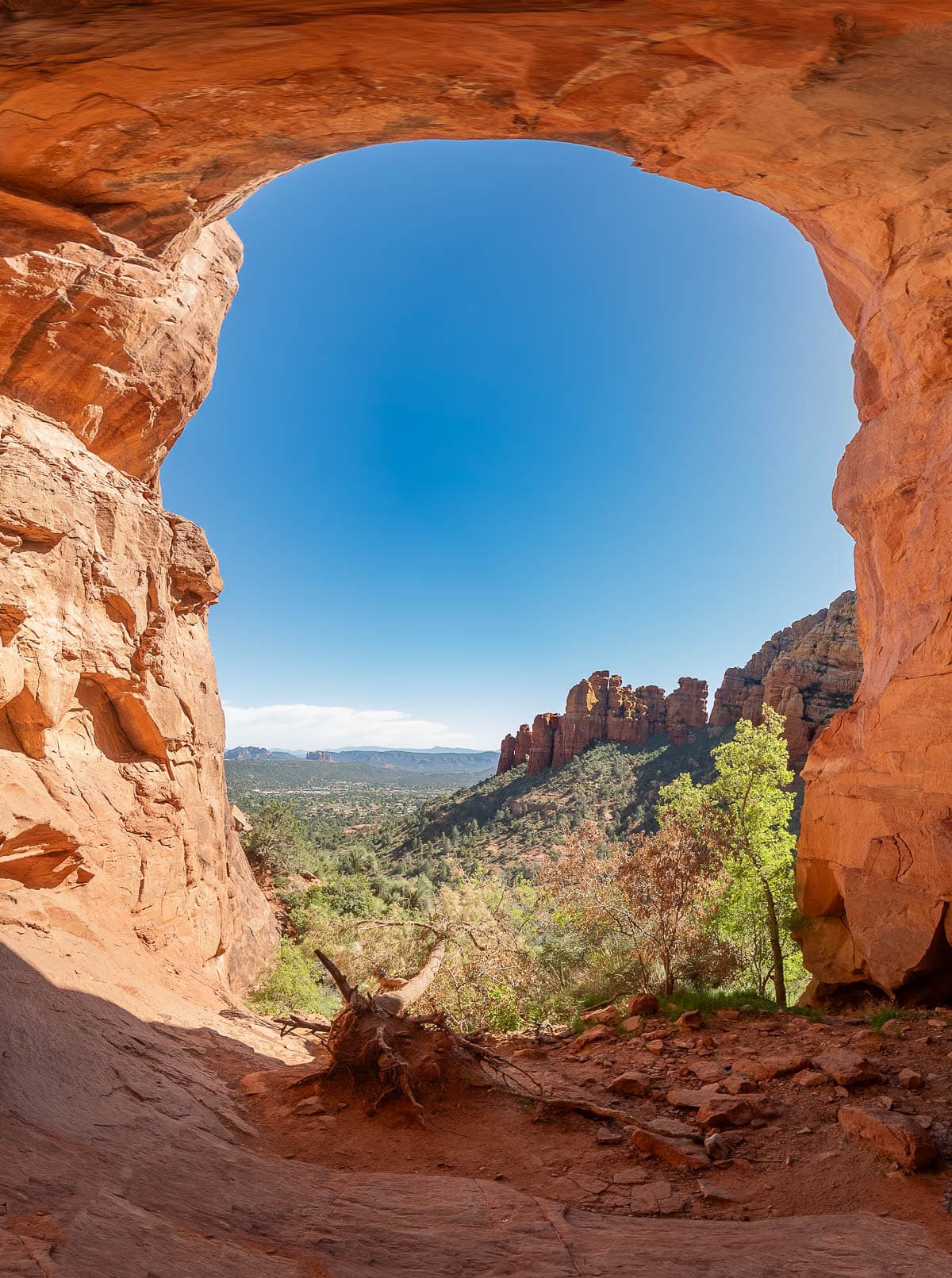
Whether your hike ends at the top ledge of the Keyhole Cave or you stay at the mouth of the cave, make sure to budget plenty of time to take in the incredible view of Sedona from here. We’ve hiked TONS of trails all over town and, in my opinion, it offers some of the best views in the entire area.
When you’re done in the Keyhole Cave, simply retrace your steps back to the trailhead—just be super careful as you make your way down the steep pathway from the cave’s mouth as it’s even easier to hurt yourself!
Tips for the Keyhole Cave Trail
Wear long pants and sleeves, if weather permitting
The trail here is quite narrow and unmaintained, with tons of stabby cacti on either side.
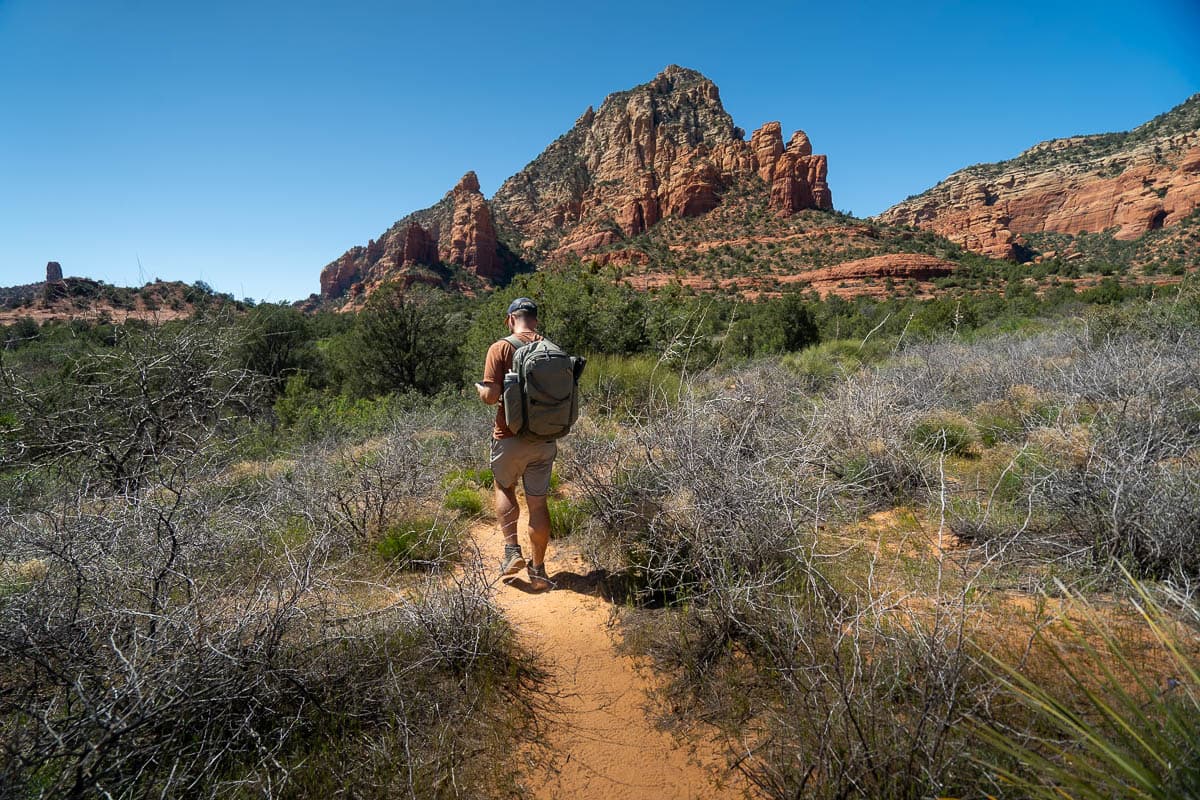
Both Justin and I got cut more than once by cactus needles while hiking here, which could have been more easily avoided if we were wearing long pants and sleeves.
Bring more water than you think you need
Given how short this trail was, Justin and I only brought one half-full bottle of water, assuming that would be enough.
Wrong! Between the Sedona heat and the steep and challenging climb up to the Keyhole Cave, we COOKED through our water by the time we made it up to the opening of the cave. So don’t make the same mistake as us and bring more water than you think you need!
Follow the Leave No Trace principles
Leave the trail better than you found it. Stick to the main pathway up to the Keyhole Cave to prevent further erosion and damage to the plants; don’t leave any trash or waste in the cave or along the trail; and generally be respectful of the land, the locals, and other visitors.
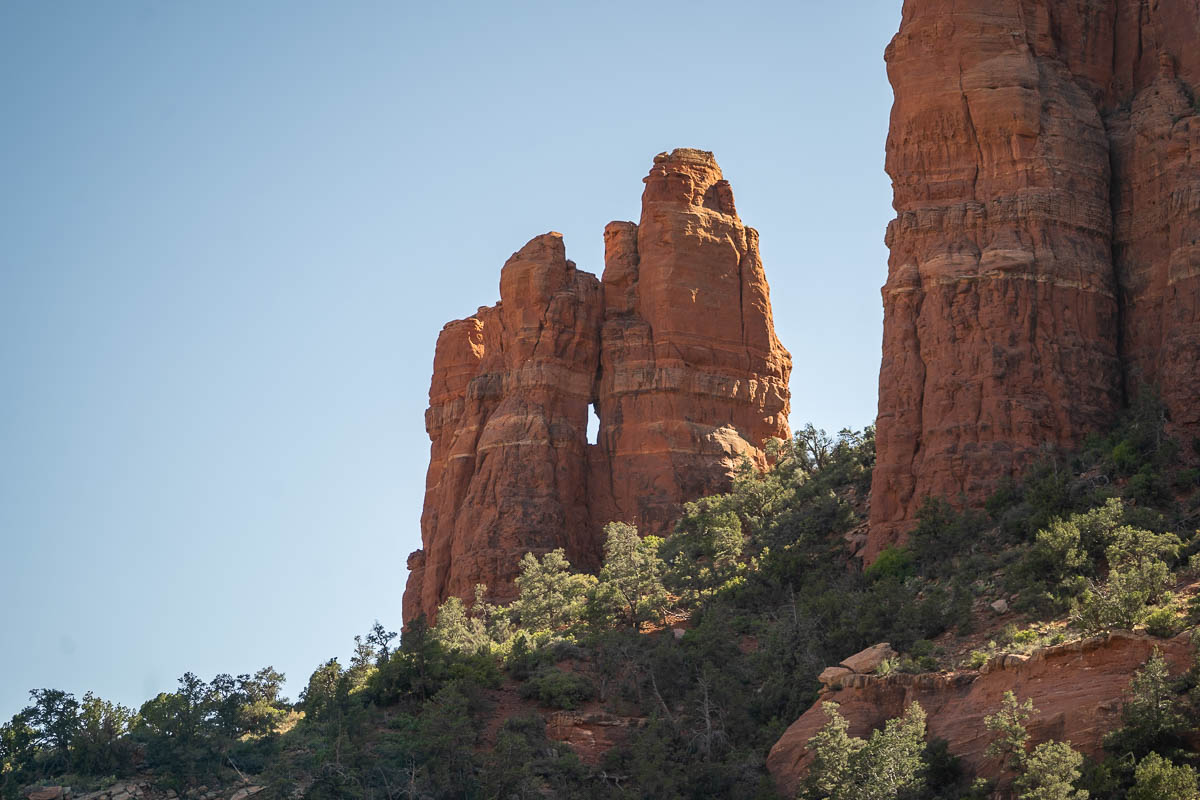
When to hike to the Keyhole Cave
One of the best things about Sedona is that you can enjoy its stunning landscape year round—although there’s definitely times where you’re more likely to enjoy your visit than others.
The most popular times to visit are spring and fall, when the temperatures are more moderate and the skies are sunny and clear.
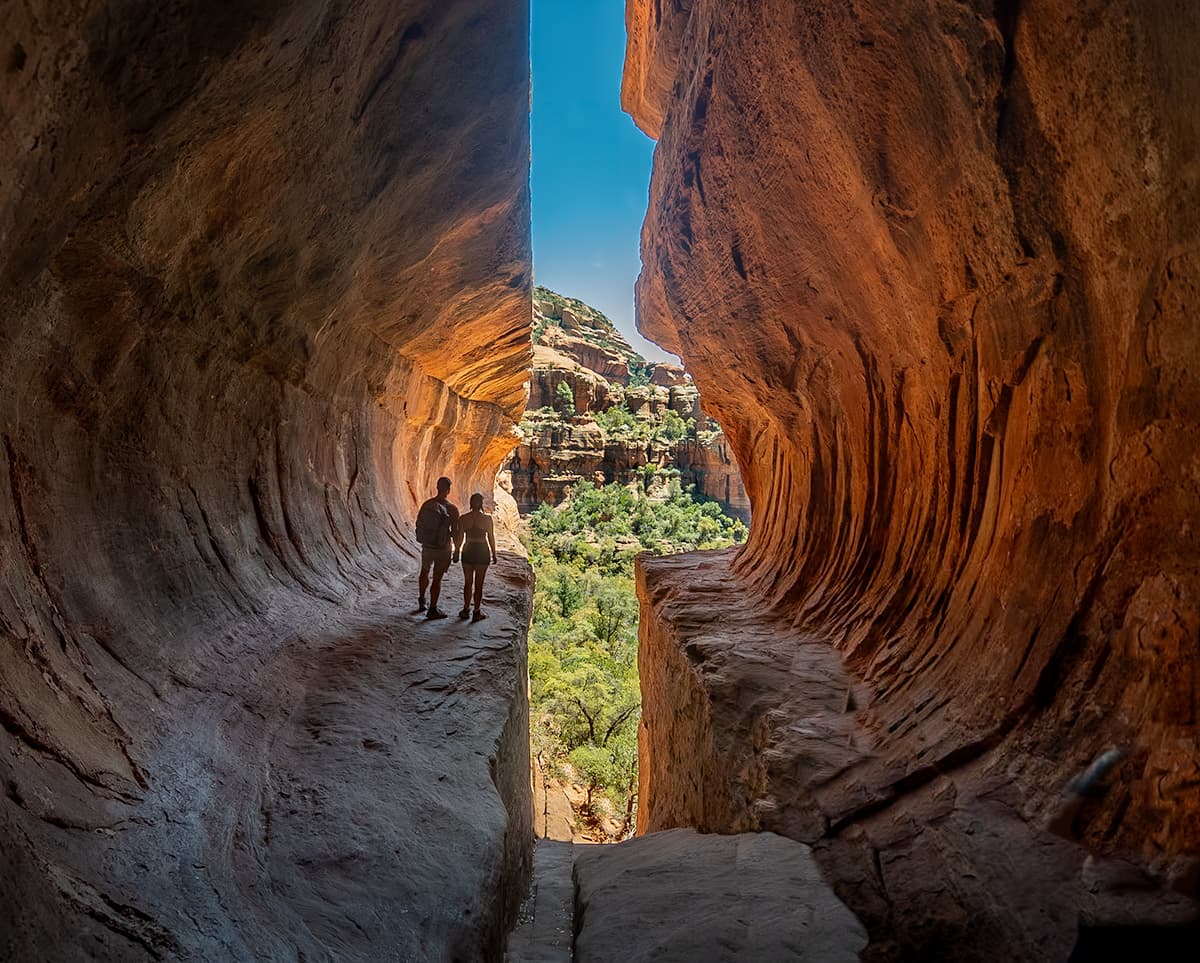
That being said, I’ve spent several weeks in Sedona across a variety of seasons and have found that spring and fall are INCREDIBLY busy here. Sedona’s infrastructure has not kept up with its recent boom in tourism, so the traffic is always awful and parking lots, trails, and restaurants are absolutely packed.
The weather is obviously cooler in the wintertime and can actually be downright chilly in the early mornings and evenings. Still, the weather definitely still feels nice while hiking, with the average daily highs in January hitting around 57 degrees, and Sedona looks absolutely magical with a light dusting of snow.
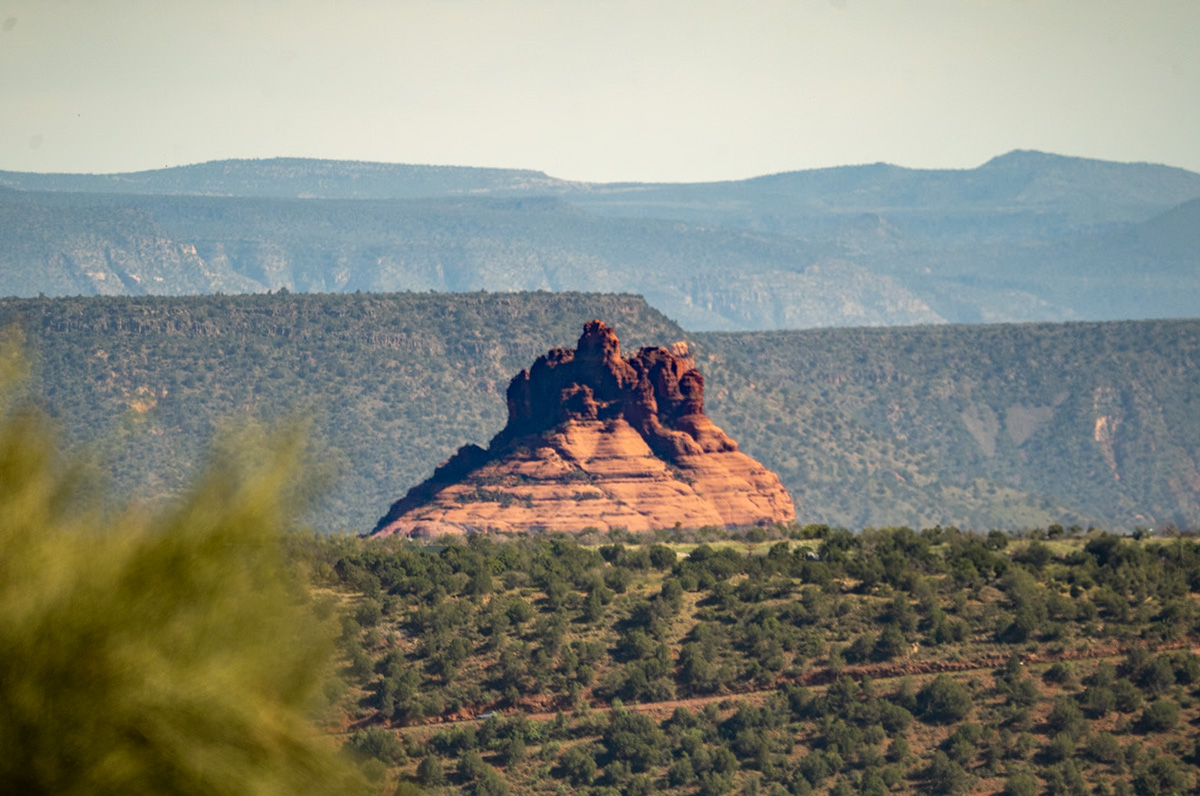
The worst time to visit Sedona is the summer. While its higher elevation ensures that it’s cooler than many other popular destinations in Arizona, it still can get swelteringly hot, regularly exceeding 100 degrees.
On the bright side, you can often save some serious money on airfare and hotels by visiting during this time—just be sure to start any hikes early or later on in the afternoon and bring TONS of water with you!
I hope you love exploring the Keyhole Cave as much as we did! Do you have any questions about hiking this trail? Let us know in the comments below.

